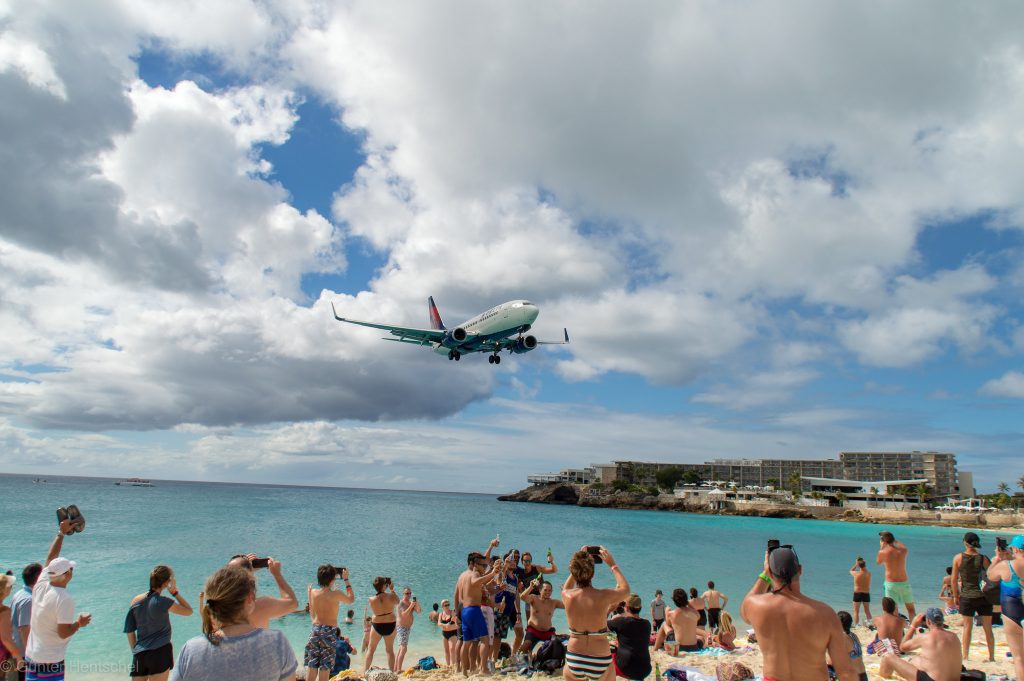Skift Take
Travel is relative to people's needs and right now leisure is king — especially for cooped-up college kids. If airlines want to cash in on pent-up demands, servicing underserved locations offering a combination of nature outings and social distancing is key to increasing revenue output during the pandemic.
Almost two weeks into the launch of spring break, how is traffic on planes looking? Is this a revenue win for the airlines or is the much anticipated spring break recovery a bust for airlines?
The answers really depend on the airline. The landscape looks vastly different for the major airlines, than that of the low-cost carriers.
Legacy airlines represented by industry trade group Airlines for America (A4A) said as of March 15 are carrying 53 percent fewer passengers than pre-pandemic and have 73 percent fewer bookings than the same period in 2019, a Covid-19 slide deck published by A4A shows.
“U.S. passenger airlines are currently burning an estimated $150 million of cash per day,” said Katherine Estep, an A4A spokesperson.
On the other hand, low-cost airlines seem to be faring better with the leisure travel sector traditionally traveling during spring break.
Thanks in part to a January sales blitz for travel in March and April and the launching of a destinations series on its YouTube channel, Dallas-based Southwest Airlines is projecting a slight increase in load factors of 65 to 70 percent in March and 70 to 75 percent in April.
“The company has continued to experience an improvement in leisure passenger bookings with beach and other nature-inspired destinations continuing to outperform other regions,” said Tammy Romo, Southwest Chief Financial Officer, in a filing with the U.S. Securities and Exchange Commission. “March and April 2021 operating revenues are currently expected to improve compared with the company’s previous estimations primarily due to an increase in passenger traffic and fare expectations.”
The takeaway for all airlines is the surprising rise of scenic and nature destinations for spring break travel that allow passengers to get away while social distancing.
The pandemic has seen a rise in domestic travel to open spaces in Colorado, Wyoming, Utah and Idaho. But none of these states matches the amount of passengers flocking to South Dakota and Montana. These are the only two states seeing an increase in air service, whereas the remaining 48 states are experiencing a combined 35 percent air travel reduction, with Washington, D.C. affected the most, the A4A Covid-19 slide deck said.
“We’ve seen some of the best bookings that we have through the pandemic coming up for the spring break period which is phenomenal,” said Drew Wells, Allegiant Air’s senior vice president of revenue.
While Allegiant is still seeing more cancellations than usual, Wells attributes this partly to people wanting the flexibility to change their travel plans depending on the trajectory of the pandemic.
Allegiant passengers are traveling to the usual spring break destinations in the west coast of Florida, including Punta Gorda and St. Petersburg, as well as to Phoenix, but the airline also is seeing more bookings to nontraditional destinations, Wells said.
“We’ve operated into Montana for most of the 20 years that the airline has been in existence, but only this year have we really started to see that travel originate from Vegas and go outbound,” Wells said.
While nature outings are on the rise, the more traditional spring break beach destinations remain popular. Hawaii, which has implemented very restrictive requirements for travel to its islands, screened 21,000 travelers on arrival, of which 76.9 percent were visitors between March 11-18.
Meanwhile In Puerto Rico, an increase in traffic is helping the U.S. territory recover from past severe hurricanes.
“As we look to spring break, we’re seeing bookings increase steadily since the vaccine roll out began in the U.S. It’s undeniable that traveler confidence correlates with these increases,” said Brad Dean, CEO of Discover Puerto Rico. “We typically see about a quarter of visitors from Florida and this has increased to more than 30 percent. Visitors are also spending more time outside of the San Juan metro area.”
Historically, 80 percent of trips have included visits to municipalities outside of San Juan. In recent weeks, this has increased to 85 percent and more families with children are booking accounting for 38 percent of bookings, compared to 35 percent in 2019, Dean said.
Visits to Rio Grande, Luquillo and Fajardo, communities near some of Puerto Rico’s natural attractions, are seeing the most visitors, he added. These three destinations have reported visits rising more than 30 percent, Dean said.
The number of flights to Puerto Rico also is rising. Airlines are expected to add more than 6 percent more seats to the territory in April compared with March, rising to 25 percent more seats by July. This correlates to increasing traveler confidence as more vaccines are administered, he said.
More than 15,000 passengers flew to Puerto Rico on March 16, the highest number since the previous March, Dean said.
The Daily Newsletter
Our daily coverage of the global travel industry. Written by editors and analysts from across Skift’s brands.
Have a confidential tip for Skift? Get in touch
Tags: airlines, allegiant air, coronavirus, coronavirus recovery, florida, hawaii, puerto rico, southwest airlines, spring break
Photo credit: Tourists at a Philipsburg, St. Maarten beach taking photos of an incoming Delta flight. Günter Hentschel / Skift/Flickr
